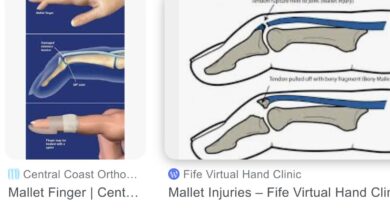The YIPS: A Golfer’s Curse

Focal dystonia! I bet you haven’t heard that term, but to golfers who have it, it’s a nightmarish curse. They know it as the YIPS. It has afflicted even the best of golfers and has destroyed many professional careers. Some are able to overcome it, but some, like David Duval and Ian Baker-Finch, quit the PGA Tour because of it. Even Tiger Woods suffered its effects when he was recovering from back surgery.
The Yips are involuntary wrist spasms that occur when golfers are trying to putt. It used to be thought the Yips was associated with performance anxiety, the failure to maintain muscle control during stressful moments in sport, when, instead, twitches, jerks, or jitters occur. It’s incredibly frustrating and aggravating. It leads to putts hit too hard, left short, or hit off line.
Dystonia is a general term for neurological disorders characterized by abnormal movements. Other common dystonias are Parkinson’s disease and Huntington’s Chorea. Both have abnormal generalized involuntary movements as major symptoms. A Focal Dystonia is one localized to one specific area; in the case of the Yips, it’s the wrists. The wrists, and control thereof, are important for accurate chipping and putting. Without precise control, the golfer never knows where his ball might go at a time when he wants the fewest strokes possible. Scientists say “the message from your brain to your muscles gets scrambled, and the muscles start running the wrong program.”
Whatever the cause, it can be devastating. Ask Bernhard Langer who changed his putting grip and type of putter numerous times until he found a solution. Or David Duval, who went from No. 1 in the world to a player with no game after winning the 2001 British Open. Or Ian Baker-Finch whose promising career collapsed after winning the 1991 British Open. He lost his swing, his confidence, and from 1994-1997 missed 32 consecutive cuts. They and many others, as many as 33%-48% of serious golfers, have experienced the Yips. It’s a nightmare.
The biomechanics of the Yips break down into four factors. They are:
- Increased muscle tension in the forearms
- Increased grip force applied to the putter grip
- Increased variability in wrist action during putting
- Greater putter face rotation through the putting stroke
Psychological factors are important as well. When the golfer is over attentive to their movements, abnormal movements can happen. We don’t think about walking or picking up objects, but when we pay too much attention to our movements we “interrupt our body’s ability to self-organize movement,” known as “paralysis through analysis.” It is then that the Yips occur.
Correcting these biomechanical and psychological malfunctions requires much time and effort. Consciously trying to lessen tension in the arms, wrists, and grip, and reducing activity in wrist movements are a start with the aim to make putting strokes more relaxed is one maneuver. Learning to putt with the non-dominant hand, and slowly and gradually re-introducing the dominant hand. During practice sessions, think about your target and not your technique. Ignoring how you putt and focusing on where you want the ball to go “allows you to perform better under pressure.” But getting over the Yips takes a long time and cures can be elusive.
If you worry less about the result of your shots, free up your putting stroke, “be your own best friend,” and “avoid catastrophe thinking,” you can beat the Yips. Try everything until you find the solution. It can be very difficult.
References: nationalclubgolfer.com/curin-the-yips
mayoclinic.org/diseases-conditions
collegeofgolf.keiseruniversity.edu/Yips
bleacherreport.com/articles/10-worst-cases-of-Yips.




